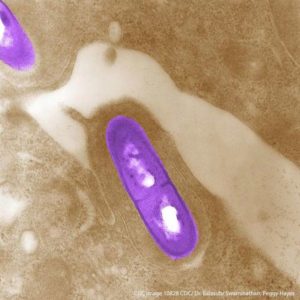September is Food Safety Education Month, where public health agencies like the FDA, CDC, and USDA encourage people to follow best practices for food safety in order to help reduce the risk of foodborne illness. The CDC estimates that about 48 million people will get sick with food poisoning each year. At least 128,000 of those people will be hospitalized and about 3,000 will die. At Pritzker Hageman, we represent people who have been seriously sickened or even killed by unsafe food. While there are some steps people can take to reduce the risk of cross-contamination in their kitchens at home, our clients are people who have developed serious foodborne illnesses because food companies (including restaurants, grocery stores, farms, producers, and manufacturers) failed to follow basic food safety procedures. Since foodborne pathogens such as Listeria, E.coli, and Salmonella are colorless and odorless, it is impossible for people to know if the food they are about to eat has been contaminated with one of these dangerous pathogens.
We’ve stood next to the hospital beds of our clients as they’ve fought for their lives against serious foodborne illnesses. Some people recover, but sadly some do not. Food poisoning can cause serious complications and long-term health problems such as chronic arthritis, brain damage, nerve damage, kidney failure, and death. It’s our job to help our clients and their families get maximum compensation for the suffering they’ve endured as well as justice against the corporate wrongdoers who harmed them. For this year’s Food Safety Education Month, we’re sharing the stories of a few of our clients who have suffered from serious foodborne illnesses, all because a food company failed to take the necessary steps to keep our food supply safe.
Justice For a Man Who Developed Listeria Meningitis from Contaminated Ice Cream
 Listeria is a particularly dangerous foodborne pathogen because it can survive freezing temperatures. This means that ice cream and other frozen treats are at risk for Listeria contamination. The only way to kill Listeria bacteria is to heat it to 165˚F. With some frozen products, there is a “kill step” where it is heated to a high enough temperature to kill dangerous pathogens before it is churned or frozen. In this case, contamination happens later on in the processing stage, perhaps through churning or packaging. In many of our Listeria cases, our investigations discover that food companies fail to put adequate sanitization procedures in place to eliminate Listeria bacteria from their facilities.
Listeria is a particularly dangerous foodborne pathogen because it can survive freezing temperatures. This means that ice cream and other frozen treats are at risk for Listeria contamination. The only way to kill Listeria bacteria is to heat it to 165˚F. With some frozen products, there is a “kill step” where it is heated to a high enough temperature to kill dangerous pathogens before it is churned or frozen. In this case, contamination happens later on in the processing stage, perhaps through churning or packaging. In many of our Listeria cases, our investigations discover that food companies fail to put adequate sanitization procedures in place to eliminate Listeria bacteria from their facilities.
In a recent case, we obtained one of the largest Listeria food poisoning settlements in U.S. history for a man seriously sickened from eating Listeria contaminated ice cream. As a result of his Listeria infection, our client suffered from a debilitating brain injury called meningitis. People can develop meningitis when Listeria bacteria infects the blood and migrates to the brain. Our client’s Listeria meningitis infection caused extensive brain damage and left him near death. At the conclusion of his case, our client said, “Pritzker Hageman were lifesavers in terms of accountability. Without their work, I would have had no justice for the devastating effects of my food-borne illness. I can’t thank them enough for their tireless effort on my case, their patient approach, the empathy they showed, and their overall compassion. I never felt like a number or a second-rate client and feel like I have made new friends for life.”